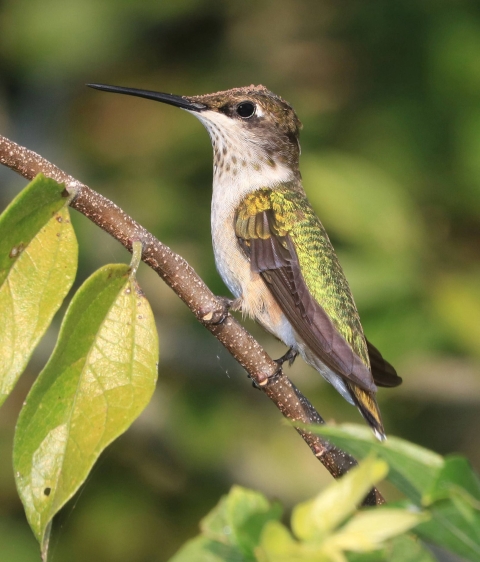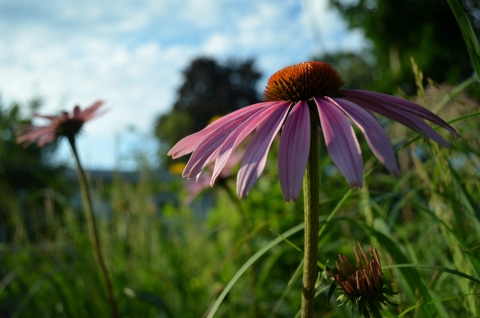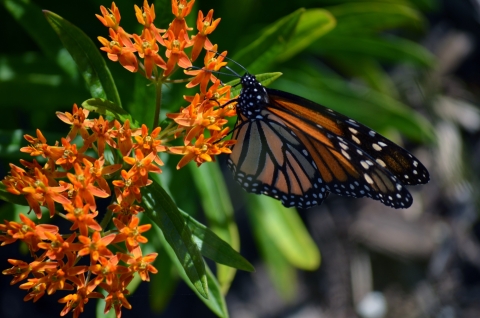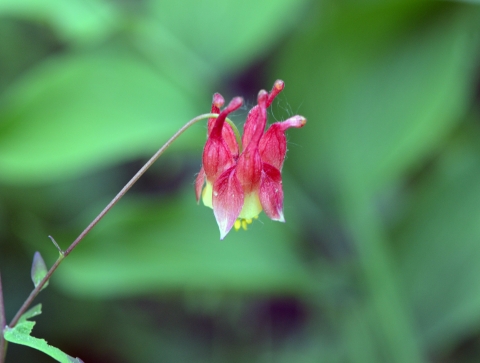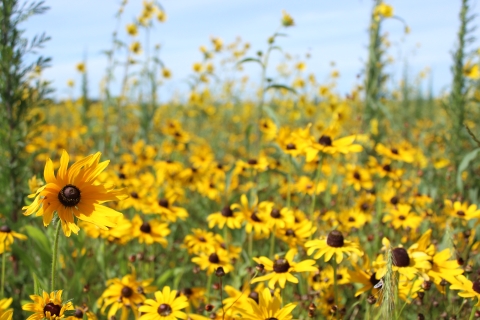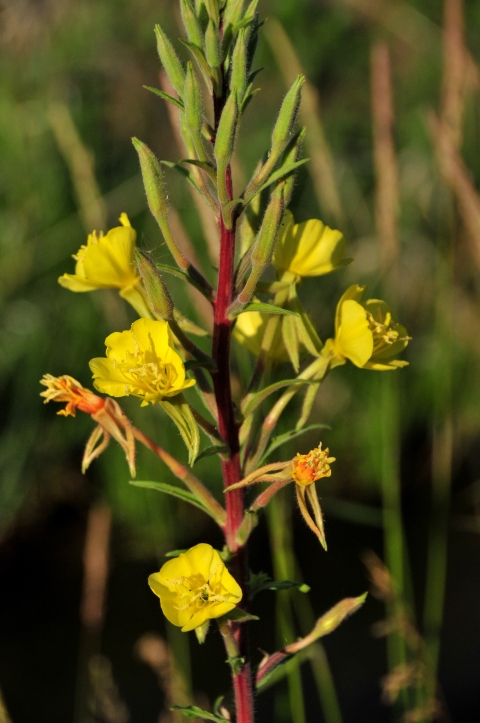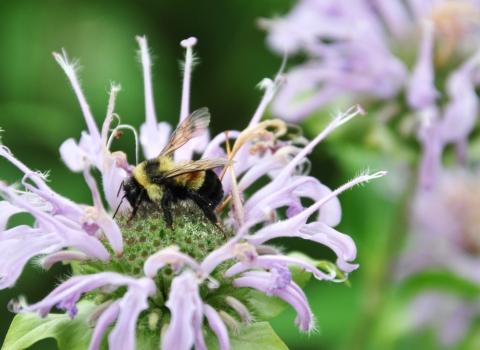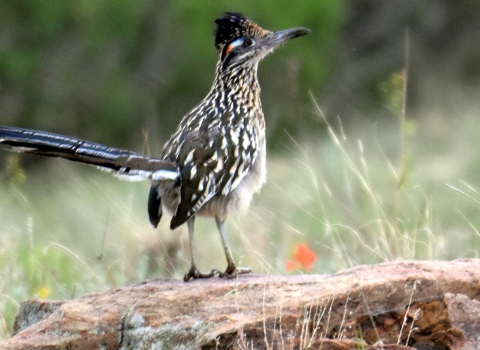There are only a few days left to find the perfect gift for the mother figure in your life. Why not give a gift that gives back? This Mother’s Day, show your appreciation not only to your mother but to Mother Earth by gifting pollinator-friendly flowers that return year after year.
Pollinators are animals that carry pollen from one plant to another. They are extremely important for the health of our planet, and at least 75% of plants rely on pollinators for reproduction.
Whether they’re hummingbirds, moths, bats, and butterflies sipping the nectar of flowers, or bees collecting pollen as food for their young, these flower-frequenters inevitably carry pollen on their fur or feathers. As they travel, they spread the love, trailing pollen from flower to flower. The result is fertilization and the eventual growth of seeds, fruits, and new sprouts.
Unfortunately, pollinator populations are declining due to habitat loss, pests and pathogens, and exposure to agrochemicals. By planting pollinator-friendly flowers, you can help increase the available food and habitat for these important animals.
The following colorful plant species thrive across the North Atlantic-Appalachian Region. Each of these stunning flowers supports a diverse array of essential pollinators. This year, ditch the grocery store bouquets and send both your mother and Mother Nature the gift of a healthier, more-sustainable future.
Purple Coneflower
The showy lavender blossoms of the purple coneflower are sure to delight. These perennials will stick around much longer than those wilting store-bought bouquets.
Purple coneflowers can grow to heights of two-to-five feet, making them the perfect backdrop for any pollinator garden. These flowers are remarkably hardy and, if given plenty of sunlight, will grow well in poor or lean soil. They are drought-resistant and thrive in dry summers. Their beautiful daisy-like flowers attract bees and butterflies.
Lanceleaf Coreopsis
Send Mom some sunshine with these bright yellow blossoms. Lanceleaf coreopsis flowers grow in small clumps but form large colonies. Like the purple coneflower, they are drought-resistant and easy to care for.
Though they don’t bloom until their second year, these stunning flowers are a favorite of butterflies, moths, and bees. They also attract finches and other songbirds, who will make a meal of their seeds.
Butterfly Milkweed
Bring a little color into Mom’s life by planting butterfly milkweed. This bushy perennial boasts bright orange bursts of flowers. Milkweeds are host plants for monarch butterfly caterpillars, which rely on them for proper nourishment while maturing.
As of 2020, the monarch butterfly is a candidate to be listed as endangered or threatened under the Endangered Species Act. Its status will be reviewed annually until a listing decision can be made. True to its name, butterfly milkweed attracts so many of these pollinators that often the bright, fluttering insects out-number the blooms.
Boneset
Gift these medicinal flowers as a thank you for all the broken bones and blisters healed by a mother’s touch. Boneset was named for its use treating dengue, also known as “breakbone” fever.
Boneset flowers grow in small white clusters that bloom in late summer. They occur naturally in wetlands and are often planted for erosion control in stormwater retention basins and rain gardens.
The pollen of these flowers attracts bees, flies, wasps, beetles, and butterflies. Caterpillars of numerous moth species — like the lined ruby tiger moth, the clymene moth, and the blackberry looper moth — feed on boneset.
Eastern Columbine
Eastern columbine is known for its stunning red and yellow flowers. The tube-like shape of these blossoms attracts long-tongued insects and hummingbirds.
Once planted, columbine will flourish for years to come and spread through self-seeding. Its ability to thrive in a saucer-less pot makes it an easy gift for mom.
Black-Eyed Susan
Black-eyed Susans resemble miniature sunflowers, with bright yellow petals and a stark black center. Concerned about garden intruders? These flowers are deer-resistant. Their seeds attract charismatic common birds like the American goldfinch, black-capped chickadee, white-breasted nuthatch, and northern cardinal, making them the perfect gift for mothers who love birding.
Common Milkweed
Despite its name, this milkweed is becoming less and less common. Because it struggles to out-compete other plants, it depends on natural disturbances to reproduce. Small events, like wind and movement of large mammals, and large events, like fires and storms, help clear the landscape so milkweed’s wind-borne seeds can find purchase and sprout.
Milkweed is the perfect gift for mothers looking to wow the local gardening club. Large balls of pink and purple flowers make these plants attractive on their own, but the abundance of monarch butterflies they attract make them a garden show-stopper.
Milkweed is named for the toxic milky sap produced by its leaves and stems. Over 450 insects are known to feed on some portion of the milkweed plant. Some even retain the toxicity in their bodies, gaining protection from predators. (While the sap is toxic to pets only in large quantities, they should be kept away from the plants.)
Evening Primrose
Evening primrose is perfect for moms who are more night owl than early bird. Essential for dramatic moon-lit strolls in the garden, these large, yellow flowers create ambiance with a light lemon fragrance. Buds of this primrose open exclusively in the evening and close before noon.
In the morning, these flowers are primarily pollinated by bees, but late in the night, their bright colors and sweet scent attract hawk moths. Some of the largest moths in the Northeast, they are notable for their extra-long tongues — perfect for sipping nectar. They are crucial for many plant species’ survival, as they travel longer distances and spread pollen farther than many butterflies and bees.
Wild Bergamot
Commonly known as bee balm, these plants were used historically to calm bee stings. Their ragged pom-pom flowers come in shades of lavender, pink, and white. Their bright colors and fragrance attract all kinds of pollinators, though they are a particular favorite of moths and hummingbirds. Bee balm is also the primary food source for the rusty-patched bumble bee, whose populations have declined more than 80% in the last 20 years.
The brilliant blooms are not only a beautiful gift for Mom but also essential food and habitat for the pollinators that support all the flowers in her garden.
Turtlehead
Give mom this unique flower and let her know you’re thankful for all those times she drew you out of your shell. These two-petaled, white, tubular flowers were named for their resemblance to — you guessed it — the heads of turtles.
Turtlehead blooms are primarily pollinated by hummingbirds with long beaks and bumblebees who have the size and strength to pry open the petals to reach the pollen inside. Turtleheads thrive in wet, mucky soils and do well in shaded woodland gardens near ponds or wetlands.

